
Single-Stage Air Compressor Buying Guide
Single-stage air compressors are a great entryway into the world of pneumatic air power for basic home and job site needs. Despite their relative simplicity, they present many choices that we’ll cover in depth.
Single Stage vs Two Stage Air Compressor
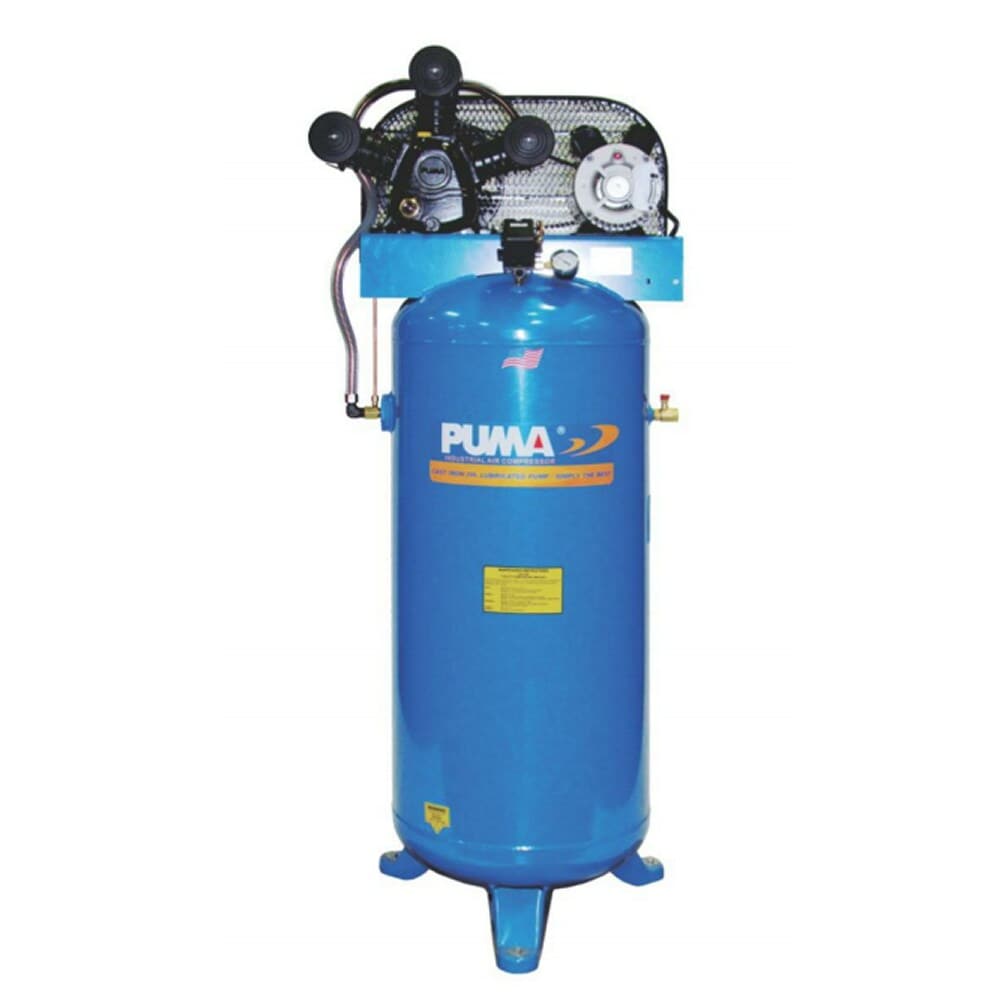 The primary difference between single-stage and two-stage air compressors is the number of times they compress the air. Single-stage air compressors compress the air once using one or more pistons of the same size, while two-stage air compressors compress the air twice using two pistons of different sizes.
The primary difference between single-stage and two-stage air compressors is the number of times they compress the air. Single-stage air compressors compress the air once using one or more pistons of the same size, while two-stage air compressors compress the air twice using two pistons of different sizes.
Since the number of compression cycles determines the amount of air pressure, two-stage compressors can produce higher pressures and are designed for professionals who use a wide variety of air tools all day. Learn more in our two-stage air compressor buyer’s guide.
Single-stage air compressors work great for intermittent home and jobsite air tool needs. For example, if you’re using air tools to perform basic maintenance around the house or you have a woodworking hobby, a single-stage air compressor should suffice. Even contractors who aren’t running their tools constantly can save money by going with a single-stage vs a two-stage air compressor on the jobsite.
Choosing the Right Single-Stage Air Compressor
Once you’ve committed to finding a single-stage air compressor, here are additional factors to consider.
Oil vs Oil-Free Piston Compressors
While traditional air compressors are oil-lubricated, oil-free compressors are coated in special friction-reducing chemicals. These oil-free compressors require less maintenance and provide cleaner, dryer air without you needing a filter.
However, as long as you’re not using the air compressor for painting or other sensitive applications, an oil-lubricated unit will work just fine. Oil-lubricated compressors also come in higher airflow models than oil-free types, which may be an additional consideration. Learn more about the differences between oil and oil-free air compressors.
Power Source
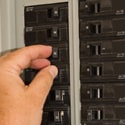 Single-stage air compressors come in gas- and electric-powered models. If you want the convenience of an electric compressor, make sure you have the means to power it.
Single-stage air compressors come in gas- and electric-powered models. If you want the convenience of an electric compressor, make sure you have the means to power it.
Many homeowners opt for an electric single-stage air compressor that runs on 115 volts and plugs into any standard wall outlet. However, these compressors are limited in the amount of airflow they can produce.
For higher airflows, you will need either a gas-powered compressor or a dedicated breaker to handle higher voltages. If you don’t have a dedicated breaker, you will need an electrician to install one.
Airflow & Pressure Needs
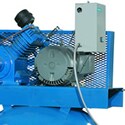 Your single-stage air compressor will need to handle your tools’ air needs. If you plan to use only one tool at a time, size your compressor to handle the airflow (CFM) and pressure (PSI) requirements of the most demanding tool in your toolbox. The owner's manual provides the tool’s airflow and pressure requirements.
Your single-stage air compressor will need to handle your tools’ air needs. If you plan to use only one tool at a time, size your compressor to handle the airflow (CFM) and pressure (PSI) requirements of the most demanding tool in your toolbox. The owner's manual provides the tool’s airflow and pressure requirements.
If you have a small workshop where more than one person uses air tools, then you need to total up the required CFM of all the air tools being used at one time and find a compressor that slightly exceeds that need.
Note that CFM and PSI go together. Compressors will produce airflow at a certain pressure, so you need to ensure the compressor’s PSI output is rated high enough for the tool’s needs.
Other Considerations
If you’ve made it this far, you’ve already considered the most important factors when choosing a single-stage air compressor. However, there are a few more considerations that will help optimize your final selection.
Loudness
Quiet air compressors are becoming more popular and widely available, especially for those wanting to use air tools in their home garage. Naturally, electric-powered compressors will be quieter than gas-powered ones. Besides that, look for sound-dampening enclosures and rubber isolation pads to cut down on noise. Learn more about finding a quiet air compressor.
Orientation 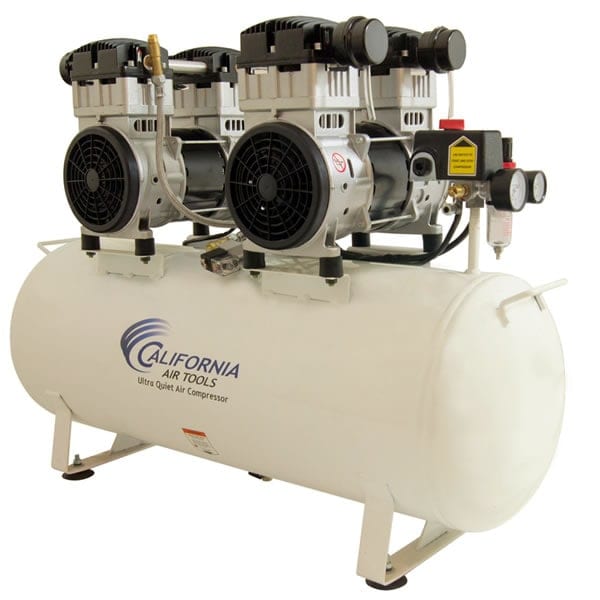 Single-stage air compressors are available in horizontal and vertical orientations. Your space requirements or limitations will determine which style to buy. If you don't have a wide area to run one in, get a vertical compressor. Likewise, if you are storing the compressor up high and have height limitations, choose a horizontal model.
Single-stage air compressors are available in horizontal and vertical orientations. Your space requirements or limitations will determine which style to buy. If you don't have a wide area to run one in, get a vertical compressor. Likewise, if you are storing the compressor up high and have height limitations, choose a horizontal model.
There is no difference in performance and utility of horizontal vs. vertical compressors of equal power. They are the same machines, just built in different styles.
Portability
You can choose between portable and stationary single-stage air compressors. For air power on the go, choose a portable unit. You can wheel it out to the driveway, deck, yard—wherever you need the air. Contractors love them because they're easy to move to and around the jobsite. However, they provide more limited airflow than stationary compressors.
Stationary single-stage compressors are perfect for those who frequently run air tools in their garage or workshop. Most are powered by 208/230 volts (single phase), so you’ll need to make sure you can meet those power requirements. The higher voltages allow stationary units to provide more airflow than portable ones.
Pump Style 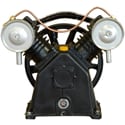 The pump on a compressor is arguably the most important piece of the machine, as it pumps out the compressed air. If the pump isn't designed for the application you are using it for, it can overheat, causing the pump casing to crack and die out.
The pump on a compressor is arguably the most important piece of the machine, as it pumps out the compressed air. If the pump isn't designed for the application you are using it for, it can overheat, causing the pump casing to crack and die out.
To prevent this, look for a single-stage compressor with a V-design or W-design pump. These styles will minimize vibration, improve cooling, and subsequently extend the life of your compressor.
Shop Single-Stage
If you still have questions about choosing the right single-stage air compressor, our knowledgeable experts will be happy to assist you. Contact us today!


![Top 5 Best Air Compressors for a Home Garage [Expert-Picked]](https://www.aircompressorsdirect.com/article-image/334/social_img_663.jpg)


